C. Rajagopalachari (1878 –1972)
- A lawyer by profession, C. Rajagopalachari joined the Indian National Congress in the year 1906 and then successfully defended a revolutionary named P. Varadarajulu Naidu.
- He went on to become an ardent follower of Mahatma Gandhi and actively participated in the Non-Cooperation Movement.
- Rajagopalachari was an important representative of Congress in Tamil Nadu.
J. P. Narayan (1902 –1979)
- A close friend of a nationalist named Ganga Sharan Singh, Jayaprakash Narayan joined Indian National Congress in the year 1929 during which Gandhi himself became his mentor.
- He then actively participated in Quit India Movement and civil disobedience for which he was jailed by the British government.
Chempakaraman Pillai (1891 –1934)
- He is a forgotten freedom fighter. Chempakaraman Pillai was one of those great activists who fought for the independence of the country from a foreign territory.
- A close associate of Subhas Chandra Bose, Pillai initiated his struggle for freedom in Germany.
- Chempakaraman Pillai had devised the famous slogan ‘Jai Hind’ which is used even today.
Shyamji Krishna Varma (1857 –1930)
- Shyamji Krishna Varma was one of those revolutionaries who took the freedom to fight outside India.
- He established the ‘Indian Home Rule Society’, ‘The Indian Sociologist’, and ‘India House’ in London; and had inspired a lot of Indian revolutionaries who fought for the freedom of India right in the heart of the United Kingdom.
Udham Singh (1899 –1940)
- Udham Singh was one of the most important and famous revolutionaries who took part in the Indian independence movement.
- He is remembered for avenging the Jallianwala Bagh massacre by brutally murdering Sir Michael O’Dwyer on March 13, 1940.
- For his act, Udham Singh was convicted and was eventually sentenced to death.
Aruna Asaf Ali (1909-1996)
- Aruna Asaf Ali was nicknamed as Aruna Ganguli. She was married to Asaf Ali, who was Indian’s first Ambassador of the USA.
- Aruna Asaf Ali was imprisoned twice. She was first imprisoned during the Civil Disobedience Movement (1930, 1932) and the second time she was imprisoned for participating in the Individual Satyagraha (1940).
- In the year 1942, Aruna Asaf Ali had hoisted the Indian National Congress tricolor Flag at Mumbai’s Gowalia Tank Grounds.
- Elected as first Mayor of Delhi, 1958.
- Aruna Asaf Ali was awarded the International Lenin Prize in the year 1964.
Bhagat Singh (1907-1931)
- Member of Hindustan Socialist Republican Army.
- He started the Militant Naujawan Bharat Sabha in Punjab.
- He killed British Official Saunders in 1928 and was involved in Lahore Conspiracy and bombed the Central Legislative Assembly.
- He was executed on March 23, 1931.
Chandra Shekhar Azad (1906-1931)
- Chandra Shekhar Azad was a famous revolutionary activist of India; he was a member of the Hindustan Republican Association and also a leader of the Hindustan Social Republican Army.
- Chandra Shekhar had gained the title “Azad” during the Non-Co-operation Movement. When he was arrested and the court asked his name, for which he repeatedly answered “Azad”.
- Chandra Shekhar Azad was involved in Kakori Conspiracy of 1925, the Delhi Conspiracy, Second Lahore Conspiracy, the killing of Saunders in Lahore, and Central Assembly bomb episode.
- Azad had shot himself while fighting with the British police at the Alfred Park in Allahabad.

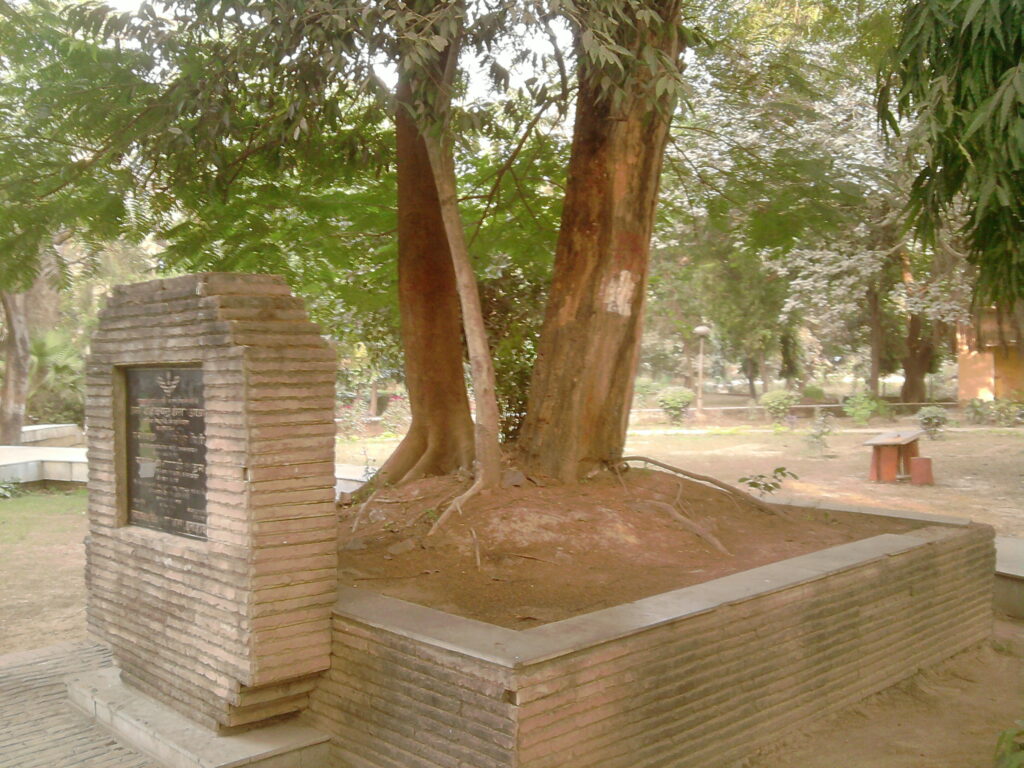
The tree at whose platform Azad shot himself
Chittaranjan Das (1870-1925)
- Chittaranjan Das was a lawyer by profession, and he defended Aurobindo Ghosh in the Alipur Bomb Conspiracy case.
- CR Das was a member of the Congress Enquiry Committee, which was set up to look into the Jallianwala Bagh Massacre.
- CR Das had established the All India Swaraj Party in the year 1923.
- He was elected as the first Mayor of the Calcutta Co-operation in 1924.
- Das had prepared the Das Formula for the Hindu-Muslim Co-operation.
- He was nicknamed as DeshbandhuChittaranjan.
- CR Das’s works include Malancha in the year 1895 (poems), Mala in the year 1904, Antaryami in the year 1915, Kishore-Kishoree, and Sagar-Sangit in the year 1913.
- Newspapers/Journal-Narayana(Bengali monthly) and Forward.
Dadabhai Naoroji (1825-1917)
- Dadabhai Naoroji was the first to demand ‘Swaraj” in the Calcutta Session of Indian National Congress, 1906.
- He was given titles like “Indian Gladstone”, and “Grand Old Man of India’.
- Dadabhai Naoroji was the first Indian to be selected to the “House of Commons” on the Liberal Party ticket.
- Dadabhai had emphasized on the draining of wealth from India by the British and its effect in his famous book Poverty and un-British Rule in India (1901).
Dr Bhimrao Ramji Ambedkar (1891-1956)
- B.R.Ambedkar was the leader of the depressed class in India and also an eminent jurist.
- He founded the Depressed Classes Institute (1924) and SamajSamata Sangh (1927).
- He set up a network of colleges in the name of Peoples Education Society.
- Ambedkar had participated in all the Three Round Table Conferences and had signed the Poona Pact with Gandhiji in the year 1932.
- Ambedkar was in the Governor General’s Executive Council from the year 1942 to 1946 and had established the Scheduled Caste Federation and Indian Labour Party.
- He was the Chairman of the Drafting Committee of the Indian Constitution.
- Ambedkar was the first Law Minister of Independent India; and he had introduced the Hindu Code Bill.
- He started ‘The Republican Party’ in 1956.
- Towards the end of his life, he embraced Buddhism.
Dr Rajendra Prasad (1884-1963)
- Participated in Swadeshi Movement (established Bihari Students, Conference), ChamparanSatyagrah, NCM, CDM and Quit India Movement.
- Founded the National College at Patna.
- He was the Minister-in-charge of Food and Agriculture in the Interim Government (1946)
- President of the Constituent Assembly.
- First President of the Indian Republic.
- Honored with ‘Bharat Ratna’ in 1962.
- Newspaper — Desh (Hindi weekly).
Dhondo Keshav Karve (1858-1962)
- A social reformer and educationalist who worked for the upliftment of women.
- He founded the VidhvaVivahottejak Mandali (society for the promotion of widow remarriage) in 1893 which was named as Vidhwa Vivaha Pratibandh Nivarak Mandali in 1895.
- Other institutions established by Keshav Karve are-Mahisasuramardini (home for widows) in 1898, Nishkam Karma Math Monastery of Disinterested Work, and Mahila Vidyalaya in 1908, Indian Women’s University in 1916 and Samata Sangh in 1944.
- He was awarded Padma Vibhushan’ in 1955 and ‘Bharat Ratna in 1958.
Dinbandhu Mitra (1830-1873)
- Dinabandhu Mitra was a Bengali writer who had highlighted the cause of Indigo planters through his popular play ‘Neel Darpan Natakam’, which was published in 1860.
- The play was translated in English by Madhu Sudan Dutt.
Jatin Das (1904 –1929)
- Jatindra Nath Das died at the age of 25yrs after a prolonged hunger strike that lasted for about 63 days.
- Jatindra Nath Das is also remembered as Jatin Das. He was a revolutionary and was lodged in jail along with other revolutionaries.
- He began his hunger strike when the political prisoners had a strikingly different environment when compared to that of their European counterparts.
V.O. Chidambaram Pillai (1872 –1936)
- A barrister by profession, V.O. Chidambaram Pillai, often referred to as V.O.C, was one of the leaders of the Indian National Congress.
- Chidambaram Pillai is remembered for his bravery as he became the first Indian to start a shipping service, competing against British ships.
- He was charged with sedition and was sentenced to life imprisonment.

Kittur Chennamma
Kittur Chennamma (1778 –1829)
- Kittur Chennamma, the Queen of a princely state in Karnataka, was one of the earliest female revolutionaries.
- She led a battalion of armed soldiers to fight against the East India Company.
- Along with her lieutenant Sangolli Rayanna, Chennamma employed the guerrilla warfare technique and fought fiercely, taking many British soldiers by surprise.
Garimella Satyanarayana (1893 –1952)
- Garimella Satyanarayana was a poet by profession and had inspired thousands of people to fight against the atrocities of the British through his poems and songs.
- He actively participated in the civil disobedience movement by penning down fiery and revolutionary poems for which he was jailed on several occasions by the government of British.
N. G. Ranga (1900 –1995)
- After getting inspired by the freedom movement led by Mahatma Gandhi, Gogineni Ranga Nayukulu, commonly known as N. G. Ranga, started a protest of his own by leading a group of farmers in agitation in 1933.
- N.G.Ranga is regarded as one of the most popular freedom fighters who have revolutionized the Indian Peasant Movement.
Bina Das (1911 –1986)
- Bina Das was one of the bravest women revolutionaries who attempted to murder Stanley Jackson, the then Bengal Governor, by firing five rounds at him at the Convocation Hall at the University of Calcutta.
- Unfortunately, she missed her target and was imprisoned for over nine years. She was once again arrested for participating in the Quit India Movement.
Bhagwati Charan Vohra (1904 –1930)
- An associate of Bhagat Singh, Sukhdev, and Chandrashekhar Azad, Bhagwati Charan Vohra too, was an important revolutionary.
- In 1929, he rented a house in Lahore and turned it into a bomb factory.
- He planned to assassinate Viceroy Lord Irwin by blowing up the train he was traveling in. Lord Irwin escaped the attack unhurt.
Hasrat Mohani (1875–1951)
- At the Ahmedabad Session of Indian National Congress, Hasrat Mohani became the first person to raise his voice against the British rule in India.
- An eminent writer and poet, Hasrat was arrested on multiple occasions for propagating anti-British policies through his articles that were published in the magazine, ‘Urdu-e-Mualla’. He was also a co-founder of the Communist Party of India.
Liaquat Ali (1895 –1951)
- Moved by the ill-treatment of Indian Muslims by British officials, Liaquat Ali resolved to free them from the clutches of the British.
- He joined the All-India Muslim League which was growing in prominence under the leadership of Muhammad Ali Jinnah.
- Eventually, Liaquat Ali became a key figure in acquiring a separate country for Indian Muslims.
Shaukat Ali (1873 –1938)
- One of the prominent Muslim leaders of the Khilafat Movement, Shaukat Ali was instrumental in forming the political policy of the Muslims by publishing revolutionary magazines.
- He was arrested on several occasions for his revolutionary activities and for supporting Mahatma Gandhi.
- He was also an important member of the Non-Cooperation Movement.
S. Satyamurti (1887 –1943)
- Sundara Sastri Satyamurti was an important member of the Indian National Congress.
- Satyamurti actively participated in the protests against the Jallianwala Bagh massacre.
- For his revolutionary activities during the Quit India Movement, he was arrested and tortured by the British soldiers.
- Sundara Sastri Satyamurti is remembered as the guru of K. Kamaraj, another freedom fighter who later became the Chief Minister of Tamil Nadu.
Khan Abdul Ghaffar Khan (1890 –1988)
- Khan Abdul Ghaffar Khan was one of those independence activists who opposed the partition of India at the time of its independence.
- Popularly known as Bacha Khan, he advocated non-violence and wanted a secular country. In 1929, he initiated the ‘KhudaiKhidmatgar’ movement, which gave the British a run for their money.
- Since his principles were similar to that of Mahatma Gandhi’s, he worked closely with Gandhi in all his endeavors.
Vallabhbhai Patel (1875-1950)
- Vallabhai Patel was a freedom fighter and social reformer from Gujarat; he is popularly known as Sardar Pater and the Government of India had honored with the title of “The Iron Man of India”.
- Vallabhai Patel’s father was Jhaverbhai Patel. He was supposed to have fought in the army of Rani of Jhansi in the Revolt of 1857.
- He started the Kheda or KairaSatyagrah in 1918 and fought for the rights of the peasants in BardoliSatyagrah. Here, he was honored with the title “Sardar”.
- Vallabhai Patel was the first Indian national leader to be arrested during the Civil Disobedience Movement.
- Vallabhai Patel had participated in Gandhi’s Quit India Movement and Individual Satyagrah.
- In the post-independence period, Vallabhai Patel was appointed as the First Deputy Prime Minister of India along with the portfolios of Home Ministry and the Ministry of Information and Broadcasting.
- Patel played an important role in integrating the 562 states in the Indian Union.
Vithalbhai Patel (1871-1933)
- Vithalbhai Patel was a freedom fighter from Gujarat and he was the elder brother of Vallabhbhai Patel.
- Vithalbhai challenged the leadership of Gandhiji over the issue of the Non-Cooperation Movement and formed the Swarajya Party.
- He was elected for the Central Legislative Assembly in 1923.
- Vithalbhai rejoined the Congress during the declaration of Poorna Swaraj but after the end of Salt Satyagrah, he again became a fierce critic of Mahatma Gandhi and a strong ally of Subhas Chandra Bose.
Vinayak Damodar Savarkar (1883-1966)
- V.D. Savarkar was a scholar, poet, social worker, historian, and he was one of the earliest revolutionaries from Maharashtra.
- He founded the organization called Mitra Mela (Assembly of friends) in 1889 and later renamed it as the Abhinav Bharat Society (New India Society) in 1904.
- He also founded the Free India Society in London in the year 1906.
- V.D. Savarkar described the Revolt of 1857 as the first war or independence in his famous book, ‘Indian war of Independence’.
- He was arrested for his involvement in Nasik Conspiracy Case.
- V.D. Savarkar was elected as the President of the Hindu Mahasabha in the year 1937.
Sachchidananda Sinha (1871-1950)
- Sachchidananda Sinha was a lawyer and educationist from Bihar. He joined the Congress in 1899 as a moderate leader.
- Sachchidananda Sinha participated in the Home Rule League Movement and he served as a member of the Executive Council of Government of Orissa and Bihar in 1921.
- He held the post of Vice-Chancellor of Patna University from 1936 to 1944.
- He also held the post of Interim President of the Indian Constituent Assembly.
- He published a popular journal, known as ‘Indian Nation’ and he edited ‘Hindustan Review’.
Subhash Chandra Bose (1897-1945)
- Subhash Chandra Bose passed the Indian Civil Services Examination in the year 1920 in England but he left the job on Gandhi’s call of the Non-Cooperation Movement.
- Subhash Chandra Bose established the Independence for India League with Jawaharlal Nehru.
- He was elected as the President of INC at its Haripura Session in 1938 and Tripura Session in 1939. But he resigned as President during the Tripura session due to his differences with Gandhi.
- He established the Forward Block in1939
- He escaped to Berlin in 1941 and met Hitler. He took over the charge of the Indian Army (Azad Hind Fauz) in the year1943 in Singapore and he also established Indian Provisional Government there.
- He addressed Mahatma Gandhi as the “Father of the Nation.”
- He supposedly died in a plane crash in 1945.
- Slogans — “DilliChalo” and “Jai Hind”.
- Autobiography — ‘The Indian Struggle’.
Sarojini Naidu (1879-1949)
- Sarojini Naidu was popularly known as the “Nightingale of India”. She was a poetess and nationalist from Uttar Pradesh.
- She was married to Dr. Govindarajulu Naidu in 1893.
- Under the guidance of Gopal Krishna Gokhale, she became the first woman to participate in India’s struggle for independence.
- She participated in the Dandi March with Gandhiji and presided over the Kanpur Session of Congress in 1925.
- She was the first woman to become the Governor of Uttar Pradesh State.
- Some of her famous poetries include – The Golden Thresholdin 1905, The Bird of Time and The Feather of the Dawn in1912, and The Broken Wing
Sarvepalli Radhakrishnan (1888-1975)
- Sarvepalli Radhakrishnan was an educationalist from Tamil Nadu. He was associated with many educational institutions in India.
- He served as the Vice-Chancellor of Andhra University (1931) and Banaras Hindu University (1942).
- Radhakrishnan gave many lectures on philosophy and theology in the universities of Manchester, London, Chicago, Oxford, among others.
- Radhakrishnan led the Indian delegation to UNESCO from 1946-50, he was the chairman in 1948 and later President of UNESCO’s University Education Commission in 1952.
- Radhakrishnan was also appointed as the Vice-President of International PEN.
- In 1962, he represented the Calcutta University at the Congress of Philosophy at Harvard University.
- He was elected twice as the Vice-President of India in 1952-56 and 1957-62 and he served as the President of the nation from 1962-67.
- His birthday (5th September), is celebrated as ‘Teacher’s Day’.
- His works include — The Ethics of the Vedanta and its Material Presupposition (1908); The Philosophy of Rabindranath Tagore (1918): Idealistic view of Life (1932); Eastern Religion and Western Thought: Indian Philosophy and Kalki on the Future of Civilization.
Rani Gaidinliu (1915-1981)
- She was a nationalist leader from Nagaland.
- She used to organize the tribal revolt movements against the Britishers in Manipur.
- She was arrested in 1932 and was released only after independence.
- Jawaharlal Nehru gave her the title of “Rani of the Nagas”.
Rash Behari Bose (1886-19

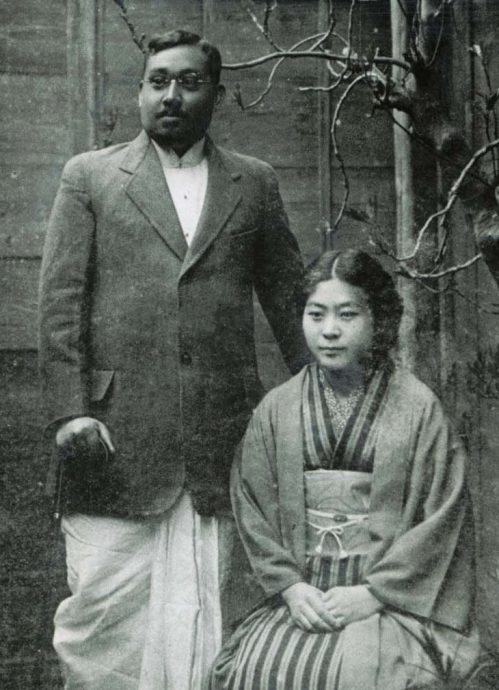
Rash Behari Bose and his wife Toshika
- Rash Behari Bose was a revolutionary from Bengal. He organized many clandestine activities in Delhi, UP, and Punjab at a very early age.
- Rash Behari Bose was connected with Lahore Conspiracy Case and Hardinge Bomb Case, after which he managed to escape to Japan.
- He established the Indian Muslim League and organized its first session in Bangkok in the year 1942.
- He was the President of the Council of Action for the formation of INA, and later he handed it over to Subhash Chandra Bose.
- Bose died in Tokyo on January 21, 1945.
Pherozeshah Mehta (1845-1915)
- He was a moderate leader from Bombay.
- He had denounced the Ilbert Bill in 1883.
- He was designated as the Vice-Chancellor of the Bombay University in 1915.
- He presided as the president of the Lahore Session of Congress (1907) after the Surat Split.
- He had a title called “The uncrowned king of Bombay”.
- He started a newspaper namely ‘The Bombay Chronicle’ and he also founded the Central Bank of India.
Rabindranath Tagore (1861-1941)
- He was a poet, educationist, internationalist, philosopher, and a patriot.
- Rabindranath Tagore elder brother Satyendranath Tagore, was the first Indian to become an ICS.
- His first poem was published in the ‘Amrit Bazar Patrika’ and then he wrote ‘Banaphul’ (story and ‘BhanusinherPadavali’ (series of lyrics).
- He established Shantiniketan near Bolpore on December 22, 1901.
- He wrote ‘Gitanjali’, to which he was awarded the Nobel Prize in 1913.
- He inaugurated the Raksha Bandhan festival to oppose the Partition of Bengal in 1905.
- He founded the Vishva Bharati University.
- In the year 1915, British Crown awarded him with a ‘knighthood’ which he renounced after the Jallianwala Bagh Massacre.
- His compositions were selected as National Anthem by two nations:
namely Jana Gana Mana by India, and Amar Shonar Bangla by Bangladesh.
Raikumari Amrit Kaur (1889-1964)
- Rajkumari Amrit Kaur was a freedom fighter from Punjab.
- She participated in the Satyagrah of 1930 as a Congress activist.
- Amrit Kaur was arrested during the Quit India Movement.
- Rajkumari Amrit Kaur was appointed as the first Health Minister of Independent India.
- She established the Indian Council of Child Welfare and was also the founder member of the All India Women’s Conference.
Margaret Elizabeth/Noble Sister Nivedita (1867-1911)
- An Irish lady, Elizabeth met Vivekananda in 1890 and inspired by him, she joined the Ramakrishna Mission and became a nun.
- She worked as a social reformer for the upliftment of women.
- She arranged relief works during the plague epidemic in 1899 and also during the Bengal famine of 1905.
- She wrote articles such as- The Web of Indian Life and The Master as I Saw Him.
Motilal Nehru (1861-1931)
- Motilal Nehru was a lawyer by profession. He became an active supporter of the Home Rule Movement in the year 1916 and he also started a journal namely ‘The Independent’.
- He headed the Congress Commission which looked into the Jallianwala Bagh Massacre incident.
- He gave up his practice during NCM and was arrested while following the visit of Prince Wales.
- He founded the Swarajya Party along with CR Das.
- He had renamed Anand Bhawan as the Swaraj Bhawan and gifted it to the Congress.
Madan Mohan Malaviya (1861-1946)
- A moderate leader and a lawyer by profession, he served the provincial and central legislature for many terms.
- With the efforts of Madan Mohan Malaviya, a memorial was built at the Jallianwala Bagh site.
- He founded the Nationalist Party in 1926.
- He worked as the Vice-Chancellor of Banaras Hindu University.
- He worked as the editor of Abyudaya, Hindustan, and the Indian Union.
Madam Bhikaji Cama (1861-1936)
- She was a freedom fighter from Mumbai.
- She attended the Socialist Congress at Stuttgart in 1907.
- She founded the Free India Society and the Bande Mataram.
Kasturba Gandhi (1869-1944)
- Kasturba Gandhi was a freedom fighter and the wife of M K Gandhi.
- She was popularly known as “Ba”.
- She supported Gandhi in all his political programs and was the first woman to be imprisoned by the British in Transvaal.
- She was arrested during Quit India Movement in 1942 and died in Poona jail two years later.

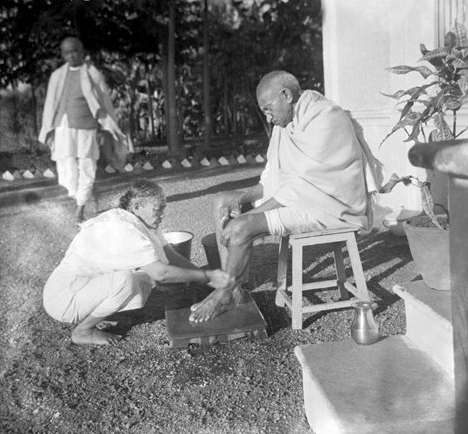
Kasturba Gandhi washing Gandhi’s feet
Jayaprakash Narayana (1902-1979)
- Jayaprakash Narayan was a freedom fighter from Bihar
- He is popularly known as Loknayak.
- He was very influenced by Marxist philosophy and he advocated for the abolition of Zamindari and also the nationalization of heavy industries.
- He joined the Indian National Congress on Nehru’s advice and was jailed during the Civil Disobedience Movement.
- He formed the All India Socialist Party in 1934.
- He participated in the Quit India Movement of 1942 and was later imprisoned.
- He joined the Bhoodan Movement led by Vinoba Bhave.
- In 1975, he protested against the National Emergency and founded the Janata Party.
Jatindra Nath Das (1904-1929)
- Jatindra Nath Das was a freedom fighter and revolutionary activist from Bengal.
- He was arrested for his participation in the Lahore Conspiracy Case.
- He died in jail after observing 63 days fast. He demanded better conditions of living for Indian prisoners in Jail.
Jyotiba Phule (1827-1890)
- A social reformer from Maharashtra, he worked for the upliftment of the low castes.
- Jyotiba Phule was against the Brahmins’ associations like Sarvajanik Sabha and PrathanaSamaj, as they were concerned about the upper caste only.
- Phule wanted to replace the Hindu religion with the“Sarvajanik Ishwar Pranit Satya”.
- He established Satyashodhak Samaj in 1873 for educating low caste people and he also authored the Sarvajanik Satyadharma Pustak.
Gopal Krishna Gokhale (1886-1915)
- Gandhi regarded Gopal Krishna Gokhale as his political guru.
- He was the President of the Banaras Session of Indian National Congress in 1905, he supported the Swadeshi Movement.
- He established the Servants of Indian Society in 1905, to train people who work as national missionaries.
Gopal Hari Deshmukh ‘Lokahitwadi’ (1823-1892)
- He was a social reformer from Maharashtra.
- He founded the Punar Vivah Mandal at Ahmedabad to encourage widow remarriage.
- He wrote many articles under the pen name, Lokhitwadi in a Maharashtran weekly, Praphakar.
- He assisted in the launch of periodicals like Indu Prakash, Lokhitwadi, and Jhan Prakash.
- He also started a weekly named ‘Hitechchhu’ in both English and Gujarati.
Mahatma Gandhi (1869 –1948)
- Mahatma Gandhi led the independence movement of India and he was successful in freeing India from the clutches of the British.
- He employed non-violence and engaged in various movements as part of his inspiring protest the British rule.
- He is the most significant freedom fighter of India and hence is called fondly called as the ‘Father of the Nation.’


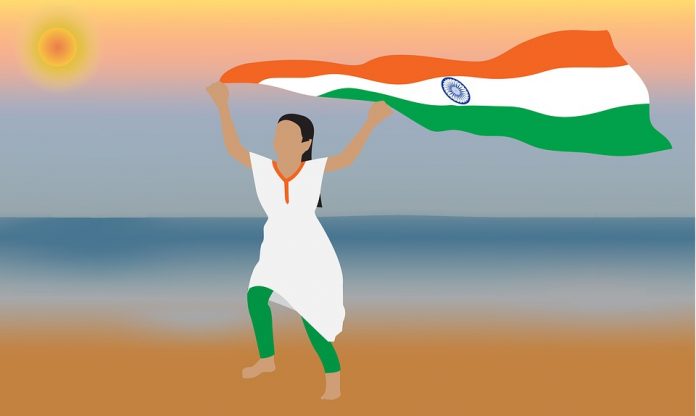
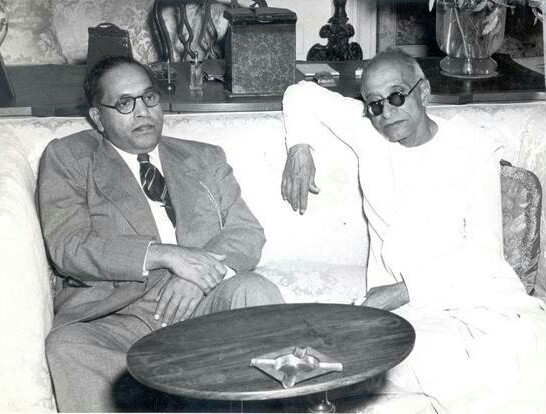


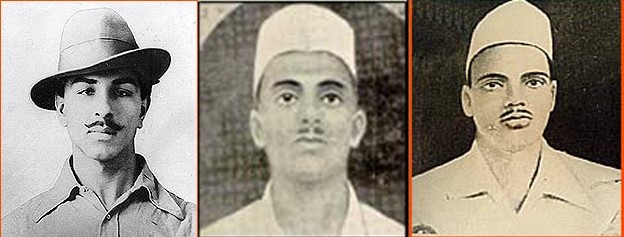


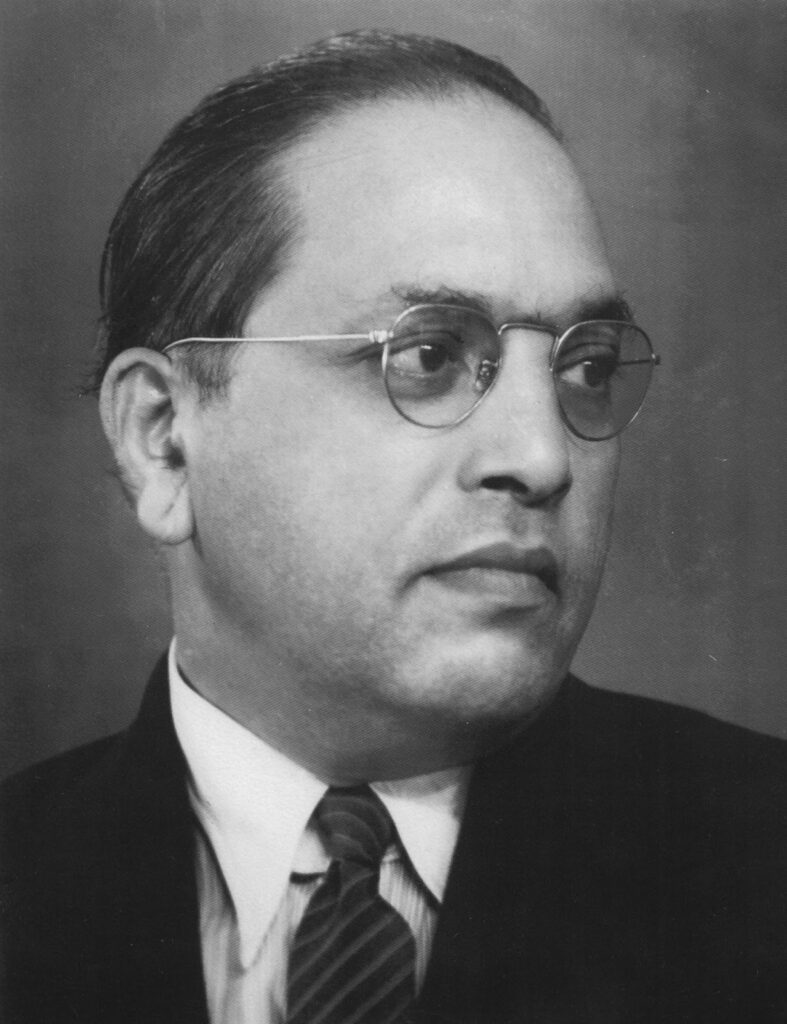



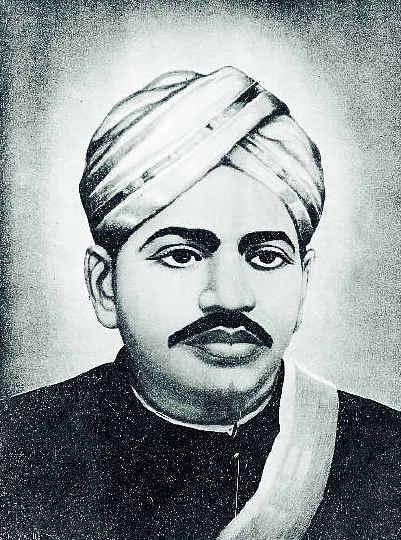
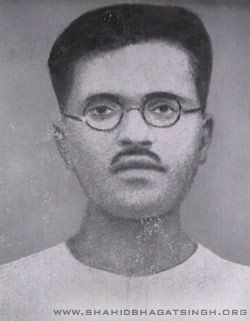



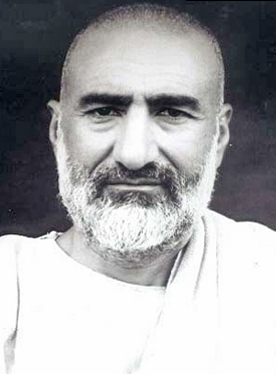


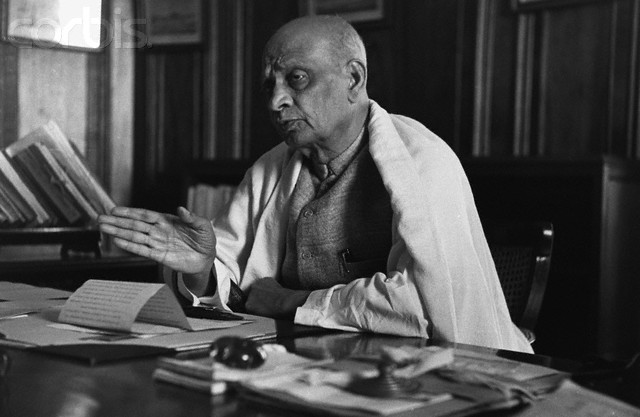

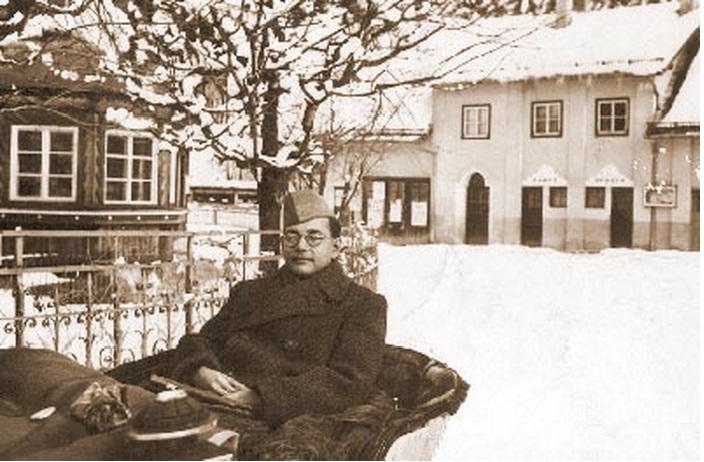
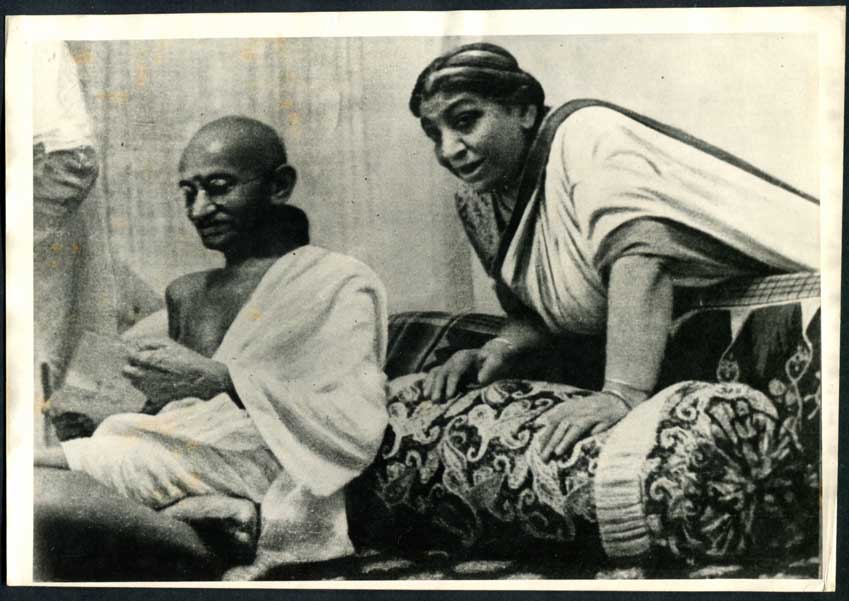

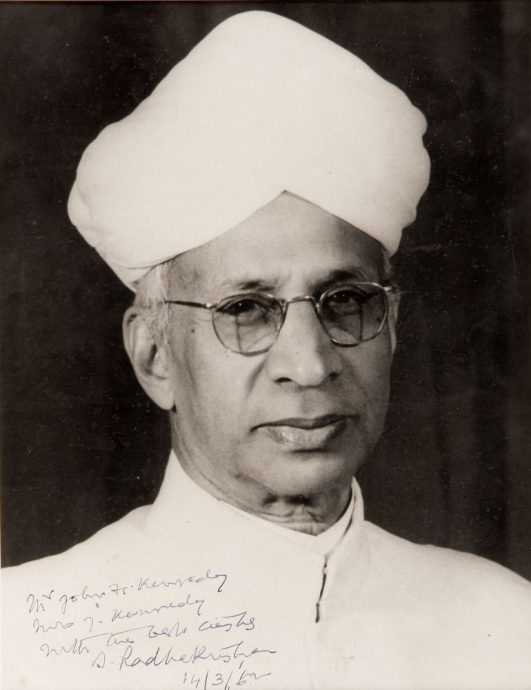
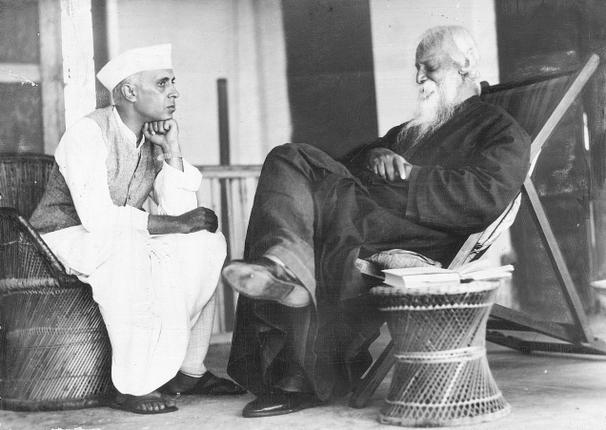


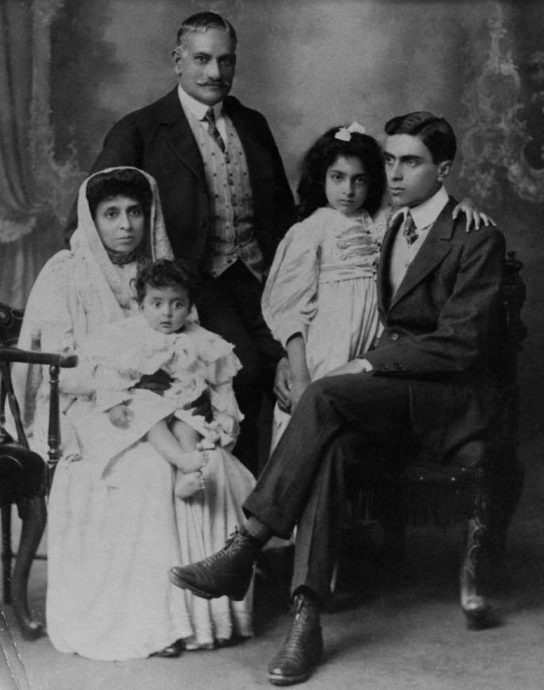



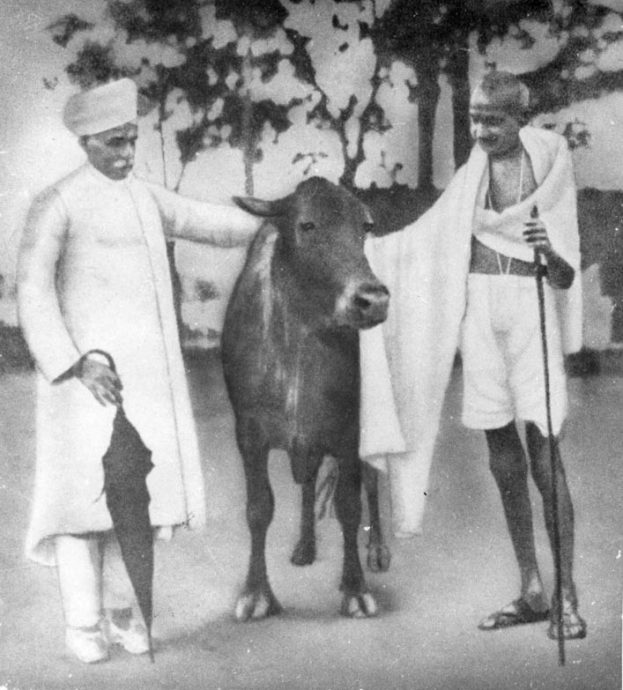



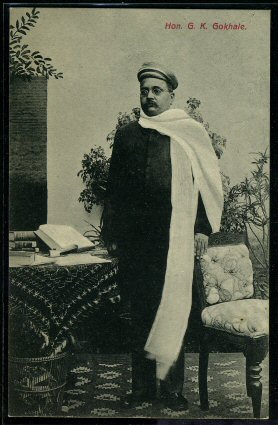



This paragraph gives clear idea in support of the new visitors of blogging, that truly how to do running a blog.
What a stuff of un-ambiguity and preserveness of valuable experience regarding unexpected feelings.
Thank you so much
I like the valuable info you provide in your articles. I’ll bookmark your weblog and check again here frequently. I am quite sure I will learn many new stuff right here! Good luck for the next!
Thank you
Thanks for this marvellous post, I am glad I detected this site on yahoo.
Thank you
I thought this post was good. I don’t know who you are but certainly you’re going to be a famous blogger;) Cheers!
Thank you
This particular article truly did switch the light on for me as far as this specific subject matter goes. Nicely done.
Thank you
Good information. Many thanks.
You are a very clever person!
Thank you